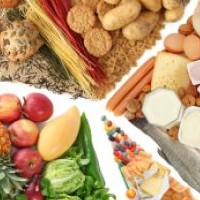Chia Seeds: Magic Bullet or False Claim?
These days, chia has become popular for another reason - as a nutritious food source. Chia seeds are an unprocessed, whole-grain food that can be absorbed by the body (unlike flaxseeds). One ounce (about 2 tablespoons) contains approximately 140 calories, 12 grams carbohydrates, 4 grams of protein, 9 grams fat and 11 grams of fiber; plus vitamins, minerals, and antioxidants. They are an excellent source of omega-3 fatty acids, low in saturated fat and cholesterol-free. No doubt, chia seeds are nutritious and can be a healthy addition to most diets.
One health claim, however, has gone a bit too far. Some sources are promoting chia seeds as being beneficial for weight loss by causing the belly to expand giving a sense of fullness resulting in less food consumption. Unfortunately, there is little evidence to support this claim.
Powerful Weight Loss Tip: be on the look-out for false diet and weight loss claims
In one study done in 2009, a team of researchers randomly split 76 overweight and obese men and women into two groups. One group was given 25 grams of chia seeds twice a day, and the other was given a placebo. After 12 weeks, the scientists found no significant difference between the groups in appetite or weight loss.
Another team of researchers reviewed the scientific evidence on chia and came to a similar conclusion. They noted that while chia is generally safe for consumption, more rigorous examination of its effects as a supplement is needed.
Also important to bear in mind, chia seeds are calorie dense - about 140 calories per ounce as mentioned previously. So, if you are watching you weight, eat them in moderation. That being said, there's no need to shy away from these nutritious seeds. Their mild, nutty flavor makes a nice addition to foods. They can be sprinkled on or mixed in cereal, sauces, vegetables, rice dishes and yogurt or added to baked goods.
Related Articles
-
Shed Those Extra Kilos With A Proper Diet Plan For Womens Weight Loss
You should feel proud of your looks and should confidently carry any
-
Diet Tips Men
The history of diet plan dated from the moment that the first monkey e
-
Top Three Diet Food for Quick and Effective Weight Loss
Before we proceed to giving you three diet foods to help weight loss,
-
Lose Inches In One Week - Effective Weight Loss Tip That Will End Your Yo-Yo Dieting
Click Here Now to Read Your FREE Report & Discover Really Weird Wo
-
Motivation To Lose Weight And Exercise
If youve ever been on a good weight loss progra
-
Some Easy Weight Loss Tips That Helps You to Reduce Extra Weight
Without a hesitation, dieting & reducing weight can be amon
- DON'T MISS
- This conditioning regime promises to acquire your method in amazing.
- Fat Burning Furnace - Cheap Diet Plan without Breaking the Bank!
- Beck Diet Solution Workbook
- The Easy and Natural Way to Weight Loss
- Tips On Losing Weight With A Diet Plan That Is Healthy For You
- The Fat Burning Furnace Torrent
- 10 Simple Tricks to Lose Weight Fast
- Weight Loss Supplements And How They Make You Fat
- Weight Loss Plans and Programs - 10 Simple Tips
- Loose Extra Calories And Strengthen Your Muscle In A Short Time With Personal Training Success




